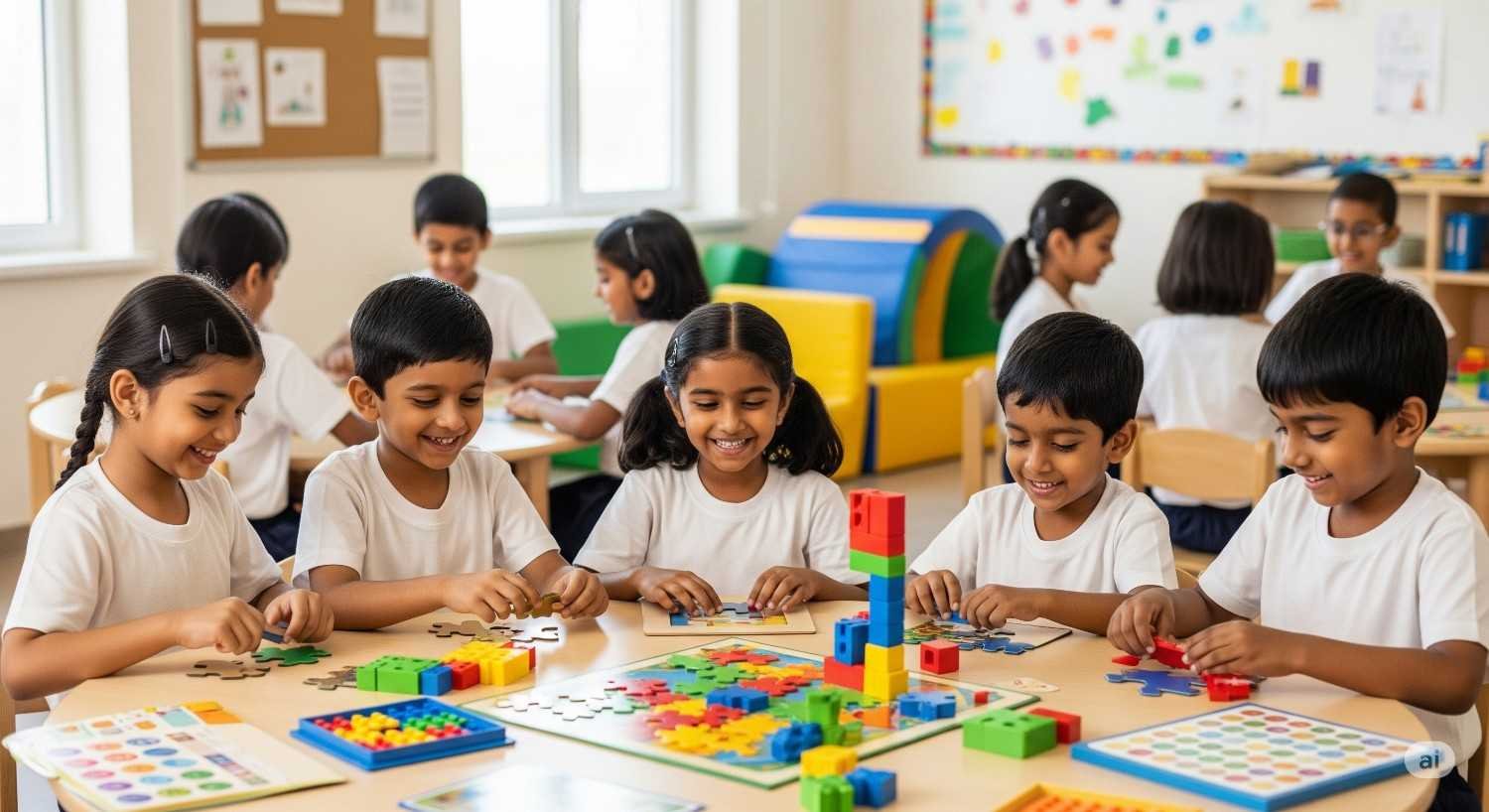
Gamification in Learning: Making Education Engaging for Young Minds
Did you know that playing games can help your children learn and grasp better? Yes, It's true ! As parents and adults, we wish that our children have a playful learning with minimal stress and have more of Dopamine in the process of learning. To add more what if we told you that incorporating interactive learning games in a fun manner and play into the learning routine of children daily chores of classrooms and at home could unlock a new level of engagement and excitement? That's where gamification comes in!. Get ready to discover a game-changing approach that will leave your child eager to learn!
In the world of digital landscape, the educators and learners look forward to suite of innovative tools for improving students’ engagement and fostering and implementing effective learning experiences among them.
Gamification- One such method that is on upward trajectory is taking attention in the education industry. . Interweaving the dynamics of games, score board, leader board in a play way method educators can make an effort to transform classrooms into dynamic environments of exploration.
Gamification is proving to increase the learner engagement and the effective learning outcomes with a series of benefits to the young minds.
1. Makes learning interactive and engaging.
2. Enhances retention and transfer of knowledge
3. Score boards increases the personalization of learning experiences.
4. Helps to reduce the student stress on knowledge transfer.
Experiential learning amalgamated with gamification makes it effective and fun.
Gamification includes varied rewards and points , badges and achievements, leaderboards and competitions, personalization and many more.
Tips to implement gamification in the Children’s Learning Environment.
1. Clearly define the learning outcomes of the subject or topic and ensure that the game elements are aligned with it.
2. Communication and collaboration with teachers and educators are essential. They can provide insights, guidance, and support in implementing gamified learning effectively in the classroom or at home.
3. Explore the age appropriate tools and platforms for the child and learning needs. Look for user-friendly interfaces, engaging content, and customizable features.
Game-based learning in early childhood education delivers a gamut of benefits, such as enhancing student engagement, promoting active learning in toddlers, and engaging and increasing the development of skills such as creativity, communication, collaboration and of all digital skills. However, it is essential to acknowledge and address potential drawbacks or challenges associated with this approach to ensure its effective implementation. One notable challenge is the need for careful game selection.
There has been a growing interest and engagement of the gamification in the schools as it enhances the learning outcomes and make learning joyful. Gamification can be used in two ways. The first way is by playing a video /virtual game into everyday use that is aligned with the curriculum. The engagement and entertainment values and levels of the students in regards to the video gaming can motivate children to accomplish tasks that are normally viewed as boring, such as learning. Another definition of gamification is the act of using game elements to make non-games more enjoyable and in case of schools, it can be explored with the subjects that seems to be challenging for the students.
Scientists have performed a study to measure the level of engagement students displayed when utilizing gamification in the classroom.3 The researchers assigned a point system to various daily class activities. Then the students were measured based on their level of engagement. The researchers found that the game-like atmosphere was favorable in the classroom and increased productivity.( Reference from https://ssec.si.edu/stemvisions-blog/5- benefits-gamification).
The advancement of technology is set to rise in the coming years, more creative ways of using gamification in education is most likely to evolve and be student friendly. However, it is important that the gamification is not limited to the four walls of the classrooms but also at the convenience of the home of a child to make the learning effective and useful. At the same time, its positive outcomes largely depend on proper and meaningful use in the course of educational activity and, of course, on its consideration of children’s developmental characteristics.
Thus, by realizing what the principles of gamification are and how necessary cognitive processes they address, we are able to explore new possibilities of child’s learning, to prepare them for further and further complication of the world.

